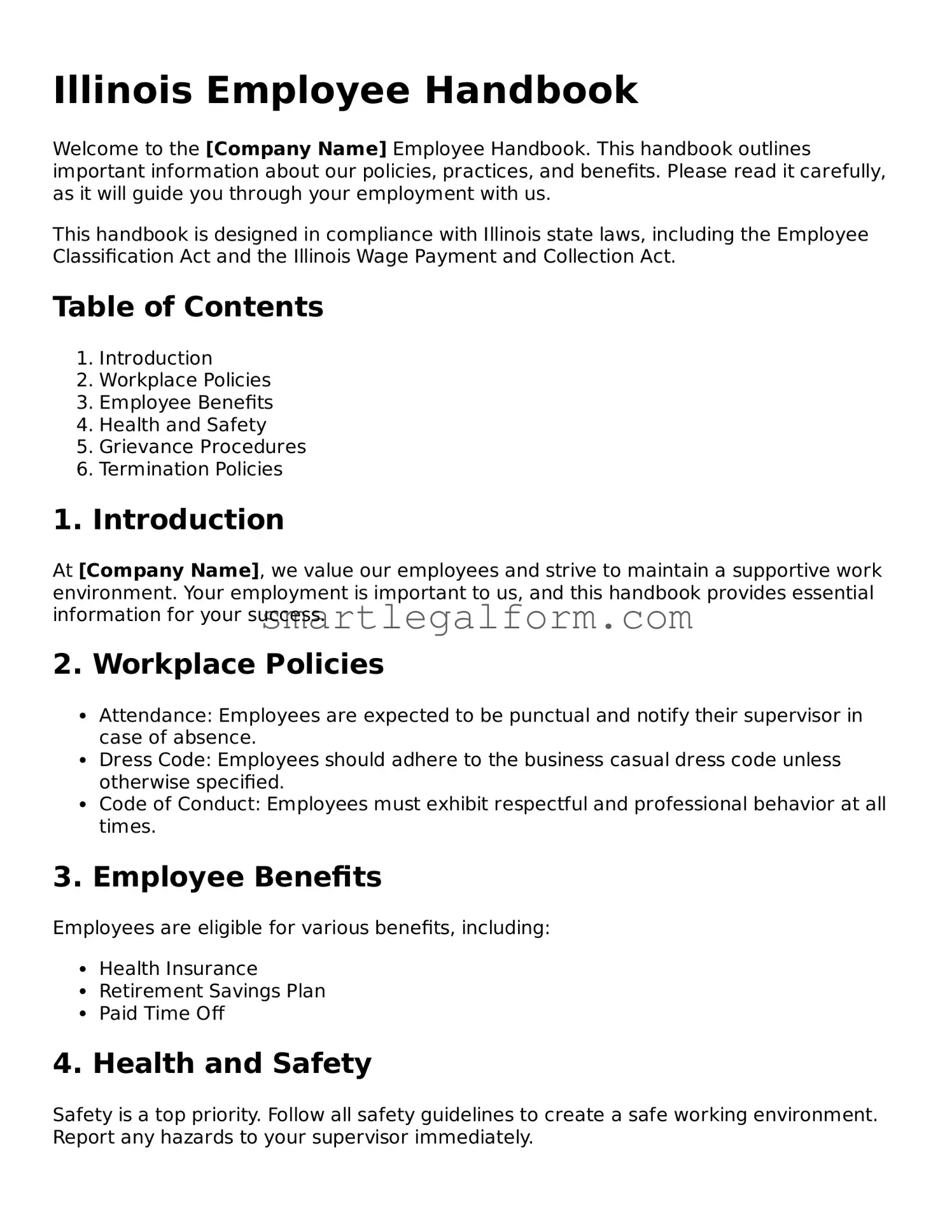Illinois Employee Handbook
Welcome to the [Company Name] Employee Handbook. This handbook outlines important information about our policies, practices, and benefits. Please read it carefully, as it will guide you through your employment with us.
This handbook is designed in compliance with Illinois state laws, including the Employee Classification Act and the Illinois Wage Payment and Collection Act.
Table of Contents
- Introduction
- Workplace Policies
- Employee Benefits
- Health and Safety
- Grievance Procedures
- Termination Policies
1. Introduction
At [Company Name], we value our employees and strive to maintain a supportive work environment. Your employment is important to us, and this handbook provides essential information for your success.
2. Workplace Policies
- Attendance: Employees are expected to be punctual and notify their supervisor in case of absence.
- Dress Code: Employees should adhere to the business casual dress code unless otherwise specified.
- Code of Conduct: Employees must exhibit respectful and professional behavior at all times.
3. Employee Benefits
Employees are eligible for various benefits, including:
- Health Insurance
- Retirement Savings Plan
- Paid Time Off
4. Health and Safety
Safety is a top priority. Follow all safety guidelines to create a safe working environment. Report any hazards to your supervisor immediately.
5. Grievance Procedures
If you have a concern or complaint, you are encouraged to discuss it with your supervisor. If unresolved, escalate the issue to [HR Contact Name].
6. Termination Policies
Termination can occur for various reasons. Employees are encouraged to discuss any concerns with management beforehand.
For further questions regarding this Employee Handbook, please contact [HR Contact Name] at [Contact Information].
Thank you for being a part of [Company Name]. We look forward to a productive and rewarding relationship.
